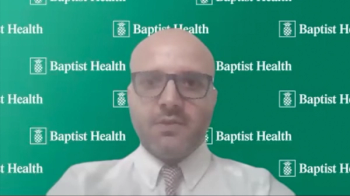
Oncology NEWS International
- Oncology NEWS International Vol 10 No 10
- Volume 10
- Issue 10
New Cellular Target Shows Promise in Cancer Treatment
SAN FRANCISCO-Aberrant responses to growth signals lead to the development of several types of cancer. The mammalian target of rapamycin (mTOR) is a protein kinase involved in the signal transduction pathway that links growth stimuli and cell cycle progression. It has emerged as a promising new target for intervening in the cancer process.
SAN FRANCISCOAberrant responses to growth signals lead to the development of several types of cancer. The mammalian target of rapamycin (mTOR) is a protein kinase involved in the signal transduction pathway that links growth stimuli and cell cycle progression. It has emerged as a promising new target for intervening in the cancer process.
Rapamycin, a macrolide fungicide, blocks mTOR activity but has toxicity problems due to its potent immunosuppressive actions. The rapamycin derivative CCI-779 (Wyeth-Ayerst) has produced particularly promising results in treatment of solid tumors, Manuel Hidalgo, MD, PhD, said at an industry-supported educational symposium of the 37th Annual Meeting of the American Society of Clinical Oncology.
Dr. Hidalgo is assistant professor of medicine, University of Texas Health Science Center at San Antonio.
Dr. Hidalgo said that two single-agent phase I trials of CCI-779 have been completed and preliminary data are available: a European trial of weekly CCI-779 that included 18 patients, and a US trial of CCI-779 given daily for 5 days and repeating every 2 weeks that included 63 patients. The maximum tolerated dose was 15 to 20 mg/m²/d on the daily schedule and had not yet been reached at 220 mg/m²/wk on the weekly schedule.
Preliminary pharmacokinetics analysis showed little or no accumulation with either the daily or weekly dosing schedule. Dr. Hidalgo said the elimination half-life was 30 hours in the US trial and 17 to 20 hours in the European trial. "There is a long elimination half-life, but much of the drug is bound to red blood cells and so is not available for distribution to the tumor," he said.
In general, Dr. Hidalgo said, "this was a very well-tolerated regimen." The most common toxicities included a variety of cutaneous reactions, asymptomatic hypocalcemia, reversible elevations in liver function tests, and thrombocytopenia.
There was one partial response on the daily regimen (a patient with previously treated non-small-cell lung cancer). On the weekly schedule, three patients had a partial response (patients with previously treated renal cell, breast, and neuroendocrine cancer). "This is encouraging preliminary evidence of antitumor activity," he said.
The fact that CCI-779 induced tumor regression at relatively nontoxic doses is noteworthy, he said, because it suggests that the optimal therapeutic dose of CCI-779 may be lower than the maximum-tolerated dose. Since clinical responses have been seen at a variety of doses, definition of the biologically active dose would require further research, he noted.
Dr. Hidalgo suggested that trials focusing solely on tumor regression may not be optimal for this new class of compounds and for other rationally developed agents in which tumor growth inhibition and delay are the predominant therapeutic effects. Other endpoints and surrogate markers such as inhibition of the target may prove more useful in determining efficacy.
Another promising aspect of CCI-779 is the potential to target therapy to subsets likely to benefit due to alterations in genes involved in the signal transduction pathway and/or cell cycle regulation mechanisms inhibited by the agent. These subsets may include patients with mutations of the PTEN tumor-suppressor gene or the cell proteins pRB, p16, p27, and cyclin D1.
CCI-779 is currently in clinical trials for glioblastoma, and efficacy studies in a broad range of tumor types are planned. Accrual has been completed on a phase II study in patients with refractory renal cell cancer. Phase I studies evaluating the feasibility of CCI-779 administration in combination with gemcitabine (Gemzar) and fluorouracil have also been initiated. Dr. Hidalgo noted that an oral formulation of the agent is in early clinical development.
Articles in this issue
about 24 years ago
High-Dose IL-2 Is Standard in Advanced Renal Cell Cancerabout 24 years ago
RIT Safe, Effective in Elderly and Poor-Prognosis Patientsabout 24 years ago
FDA Approves Xeloda/Taxotere Combination for Advanced Breast Cancerabout 24 years ago
ODAC Recommends Approval of Radiolabeled Zevalinabout 24 years ago
Proteomics Moves From the Laboratory to Clinical Researchabout 24 years ago
Radiotherapy Not Needed in Older Lumpectomy Patients With Early Cancerabout 24 years ago
Raltitrexed + Oxaliplatin for Advanced Colorectal Cancerabout 24 years ago
Mental Fatigue Worries Chemotherapy Patientsabout 24 years ago
Patients Urged to Work With Professionals Against Fatigueabout 24 years ago
NCI Director Resigns to Head New Scientific InstituteNewsletter
Stay up to date on recent advances in the multidisciplinary approach to cancer.



















































































